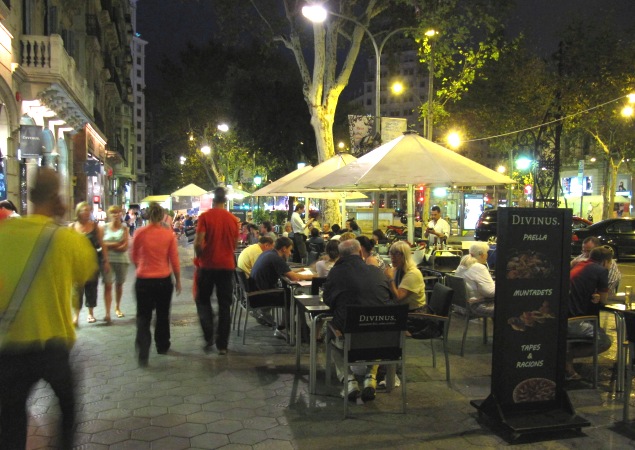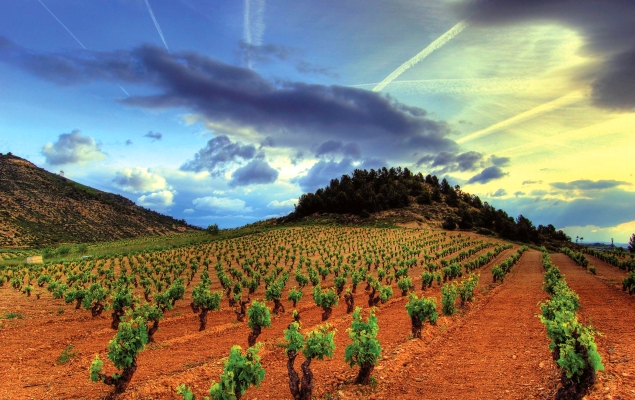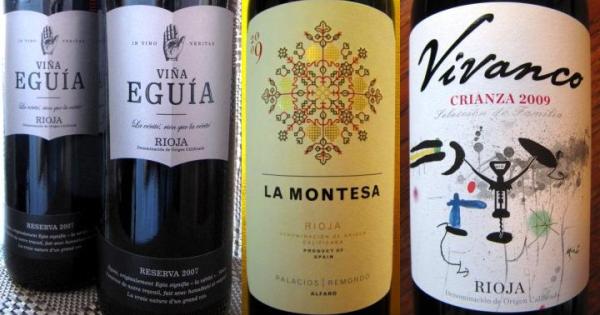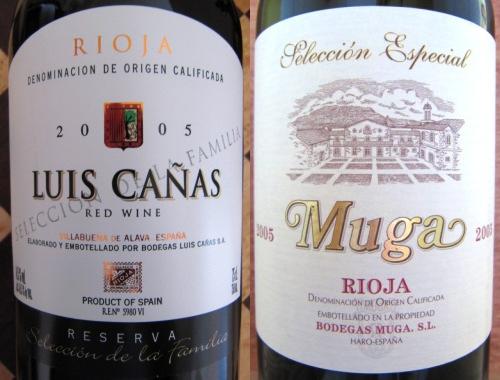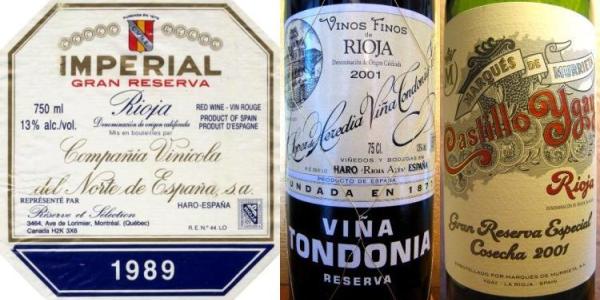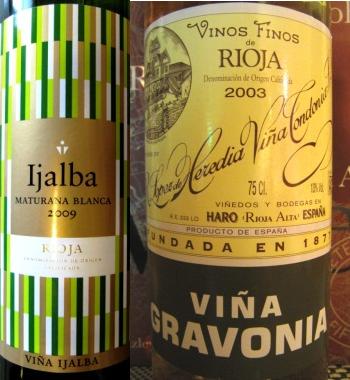A Rich Pour 24: Rioja – Celebrating the Past and Embracing the Future
Follow Cigar Weekly Managing Editor Doug Kuebler (jazznut) on a ‘bottle by bottle’ journey through Spain’s Rioja wine region.
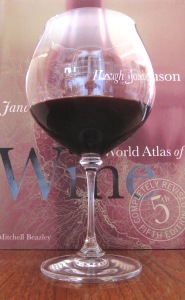
Spain, which boasts the greatest total area planted to grapevines of any nation on earth (though not the largest production of wine), is truly a happening place for any wine aficionado. Bierzo, Calatayud, Jumilla, Priorat, Rías Baixas, Ribero del Duero, Somontano, Toro, Yecla (to name but a few) – the list of officially demarcated Spanish winegrowing regions seems to lengthen almost day by day. Yet, when it comes to quality table wine, a single historic province continues to capture the attention of consumers, both in Spain and abroad – Rioja.
I well remember being seated with the love of my life at a tapas bar in Barcelona, and wondering what wines might be on tap – perhaps something from the nearby Denominaciones de Origen of Costers del Segre, Montsant or Penedès? “Dos copas de vino, por favor,” I requested. “Tinto o blanco?” the waiter inquired. “Tinto,” I replied. Then, a surprise… “Rrro-ha?” he asked in his Catalan accent. Rioja it was, then!
As we sipped our wine and savoured a delectable variety of tapas, I could only think to myself, “Me lo estoy pasando muy bien.”
What makes Rioja, which straddles the Ebro River in north-central Spain, so special? Yes, most of its acreage lies on a plateau ideally sheltered from menacing Atlantic winds by the Sierra de Cantabria. Yes, it encompasses a rather diverse trio of sub-regions (Rioja Alta, Rioja Alavesa and Rioja Baja). Yes, its grapevines benefit from a continental climate and relatively low annual rainfall. And yes, Rioja is home to a number of fine grape varieties as well as hundreds upon hundreds of wineries. But these facts in no way provide a pathway toward understanding the region’s allure. In this case, the true magic revolves around an ongoing, oftentimes complex interplay between the ancient and the contemporary.
A short history
When it comes to wine production, Rioja’s roots stretch far back into antiquity. Phoenicians sailed up the Ebro, to what is now the eastern portion of the Rioja Baja, in order to partake of the pleasures of the area’s wine. Romans, who valued the local liquid commodity even more, expanded winegrowing and established sophisticated wine cellars, or bodegas. And although the Moorish occupation put a damper on vinous pursuits for a time, Christian monasteries subsequently led a regional resurgence in viticulture. Most of the wine made during this latter period was, strangely enough, white. Indeed, red wine production in Rioja would not regain prominence until the 18th-Century and the ascendancy of the Spanish Bourbons.
Rioja really emerged into the limelight during the second half of the 19th-Century, as back-to-back scourges of oidium and phylloxera began to devastate the vineyards of Bordeaux in France. Vintners in the northern Spanish region responded by introducing faster fermentations and extended ageing in American oak casks, both techniques of which resulted in red wines that mimicked many of the characteristics of mature claret. Wine drinkers outside of Spain couldn’t get enough of Rioja’s bounty, and many new bodegas sprang up (most notably in and around Haro in the Rioja Alta) to meet the increased demand.
But what goes around comes around. These days, the overall trend in Rioja is to lengthen fermentation times and shorten exposure to oak, which is now often new rather than old and potentially ‘tired’. This transitional aspect of winemaking reflects similar changes taking place in other classic winegrowing regions of Europe.
Good grapes are essential to the success of any renowned winegrowing region. And Rioja possesses an assortment of wine-worthy ones. Three varieties usually play supporting roles in red wine production here. Graciano contributes aromatic qualities and freshness. Mazuelo (known elsewhere as Cariñena or Carignan) may display a slightly coarse demeanour, but it also brings additional seasoning flavours and tannins to the ‘table’. And Garnacha (known in many other countries as Grenache), though somewhat low in the tannin department, can certainly up the alcohol level and body of a wine.
Then, there is Tempranillo. Not overly sweet, and exhibiting fruit flavours ranging from berry to plum-like, Tempranillo can significantly increase the complexity and ageing potential of a wine if harvested and handled appropriately. Recent research has confirmed the noble ancestry of this native grape, tracing its lineage back upwards of a millennium within an area that presently comprises the regions of La Rioja and Aragón. In Rioja, Tempranillo reigns supreme.
Red wine vintages in Rioja
The reputation of Rioja rests largely on the ability of its winemakers to offer consistently good products, year in and year out. In this regard (as is the case anywhere in the world of wine), the name on the label almost always outweighs the importance of the vintage. Nevertheless, some years have exceeded others in terms of the quality of the harvested grapes. Over the last decade or so, the region of Rioja has been blessed with a series of successful vintages:
Excellent: 2001, 2004, 2005 and 2010
Red wines of Rioja and their prices
Whether you’re hunting for a modestly priced yet palatable wine or an expensive treat for a very special occasion, Rioja has you covered. The cost of a bottle may be as little as ten to fifteen dollars, or it might rise stratospherically to hundreds of dollars should you opt for something along the lines of Artadi’s Viña El Pison. Having purchased Rioja wines for over three decades now, I can only say that prices have indeed gone up during that time. Nevertheless, good buys do still exist. With these two factors in mind, let’s have a peek at eleven red wines from Rioja that I’ve thoroughly enjoyed, and that haven’t broken the bank either. These wines are profiled in ascending order of cost, and range in price from around twenty dollars to a little less than fifty dollars (Canadian currency) per 750 millilitre bottle.
Viña Eguía Reserva 2007
La Montesa 2009
Vivanco Crianza 2009
Glorioso Reserva Especial 2006
Finca La Emperatriz Reserva 2007
Baron de Ley Gran Reserva 2005
Luis Cañas Reserva Selección de la Famila 2005
Muga Selección Especial 2005
Imperial Gran Reserva 1989
Viña Tondonia Reserva 2001
Castillo Ygay Gran Reserva Especial 2001
Rioja reds with food
A red wine from the Rioja can provide one of the very best of accompaniments to many cuisines, particularly those where food is grilled or roasted. This is especially true when the wine has been aged in American oak casks. François Chartier (who was honoured with the prestigious Grand Prix Sopexa International in 1994 as the world's best sommelier in French wines and spirits) cites three food enhancers as prime matches for such an oak-matured Rioja red:
Maple syrup - When used as a flavouring, maple syrup marries extremely well with the oak-tinged aromatic qualities of the wine. For this reason, I often incorporate maple syrup in meat or poultry marinades and sauces.
Cloves - With their slightly hot, sweet and woody fragrance, cloves also match capably with oak-aged Rioja reds. No wonder I enjoy a clove-studded, honey-glazed, pineapple and cranberry braised ham so much alongside a bottle of Rioja!
Hot peppers - This one represents a bit of a revelation for me. And that's not because I haven't tried it before, but rather because I've never quite understood why the combination of hot pepper and red Rioja works so well. Once again, oak-ageing provides the key, as the softening effect of the vanilla compounds picked up by the wine during maturation helps to counterbalance any intense acidic bitterness within the pepper(s).
More than 'simply red'
Guess what. Rioja isn’t all about red wine. With that in mind, here are descriptions of a couple of superlative whites from the region.
Ijalba Maturana Blanca 2009 (approximate retail cost CDN$22)
Viña Gravonia 2003 (approximate retail cost CDN$30)
Salud!
Referenced articles and books
Chartier, François, Taste Buds and Molecules: The Art and Science of Food with Wine, translated by Levi Reiss, McClelland & Stewart, Toronto, Ontario, Canada, 2010, pp. 84, 111-112, 182-183




